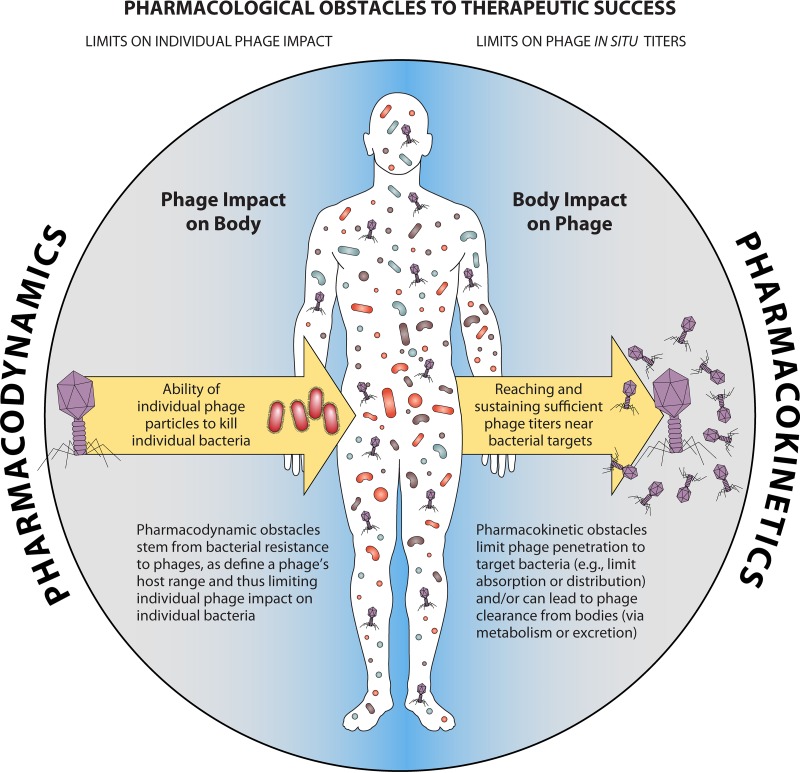FIG 1.
General principles of obstacles to phage therapy success. Pharmacokinetics refers to the impact of the body on drugs, while pharmacodynamics is described as the impact of the drug on bodies, with body in both cases including both body tissues and the associated microbiome. Pharmacokinetic obstacles are obstacles to drug movement, i.e., drug movement to the site of drug action, as well as problems with drug persistence within the body. Pharmacodynamic obstacles consist of bacterial mechanisms of resistance to phages, which can range from absolute (the infecting phage is inactivated, while the infected bacterium survives) to partial (neither the phage nor the bacterium survives) and which can consist of more subtle impacts of phage functionality (the bacterium does not survive but the phage infection vigor is compromised but not fully compromised, e.g., phage burst sizes are smaller or phages do not even adsorb to the phage-resistant bacterium). Not indicated in the figure are secondary pharmacodynamic issues, particularly, toxicities and side effects, which were not an emphasis of this review.

